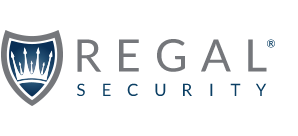The security guard industry has come a long way over the years, and now the role of a guard is becoming very similar to that of a police officer.
The perception of security guards has changed too: long gone are those rather archaic images of bouncers, doormen, and control officers with bulging biceps and a walkie-talkie.
Today’s security guards are uniformed, and armed with batons, and in certain roles guns, and they set out to protect people, places and assets, and they also safeguard a business or organization’s reputation.
Guarding is now a very popular industry. The National Association of Security Companies (NASCO) reports that there were over 1,000,000 private security officers in the USA, which outnumbered law enforcement personnel by more than two-to-one in 2020. This reality is mirrored here at home on a smaller scale of course (based on population and with the number of business and organizations compared to that of the USA), and Statistics Canada have reported that private security personnel greatly outnumber police officers. A case in point: in 2019, Statista reported that there were 25,340 police officers in Ontario, while the Ministry of the Solicitor General of Ontario shows that there are now almost 80,000 guards employed across the province, and this number may soon grow to over 100,000 with the onset of COVID-19 and our world entering a “new normal.”
A closer look at guarding and policing
For many, security guards and police are actually hard to differentiate, which was never the case a decade ago, showing how the industry has advanced with licensing, training, mobility, and technology.
The roles of a guard and police officer is similar, more-so-than-ever: guards wear uniforms, drive in marked vehicles, and utilize common equipment as police. Additionally, guards have powers granted from provincial laws so that they serve as the “agent of the owner,” giving them powers through their contract or agreement with the client they work for. This means that guards now have the ability to investigate, question, and find solutions during incidents, and they also have the authority to use force if needed. They can also apprehend suspects and they assist police and other emergency personnel during serious incidents or emergencies. Guards are also armed or unarmed, depending on their line of duty and responsibilities, and they are required to undergo special training and ongoing training to maintain their role as the “agent of the owner.”
Security guards are now involved with more technology, just as the police are: Security monitoring and surveillance and assisting the police is mainstay in our world filled with more uncertainties.
The expanding role of guarding in 2021 and beyond
Guarding is taking on a new role, beyond that of protecting and serving the public and clients.
You see, guards are now also viewed as “strategic corporals,” or “brand ambassadors.” They are the first people shoppers meet when they enter stores; the voice to wish holiday makers a “safe flight” at the airport; the first welcoming smiles flashed at visitors flooding into businesses, condos, apartments, arenas, art galleries, and museums.
What’s more interesting is that while guards have been tasked with helping protect digital and physical assets, along with people, their roles have pivoted in a big way in 2020, since the world began combatting the worst pandemic in over a century. Guards are now involved in emergency preparedness plans, risk assessments, and they even help oversee health-related concerns and procedures, like health screening at businesses and hospitals.
The changing role of security will continue as our world changes.
Could guarding replace policing altogether? Perhaps not, but the role of guards and their duties will continue to grow, and more businesses and organizations will continually utilize them.
Are you interested in a career as a security guard? Contact Regal Security Inc. today and learn about training courses and the positions we have available.
